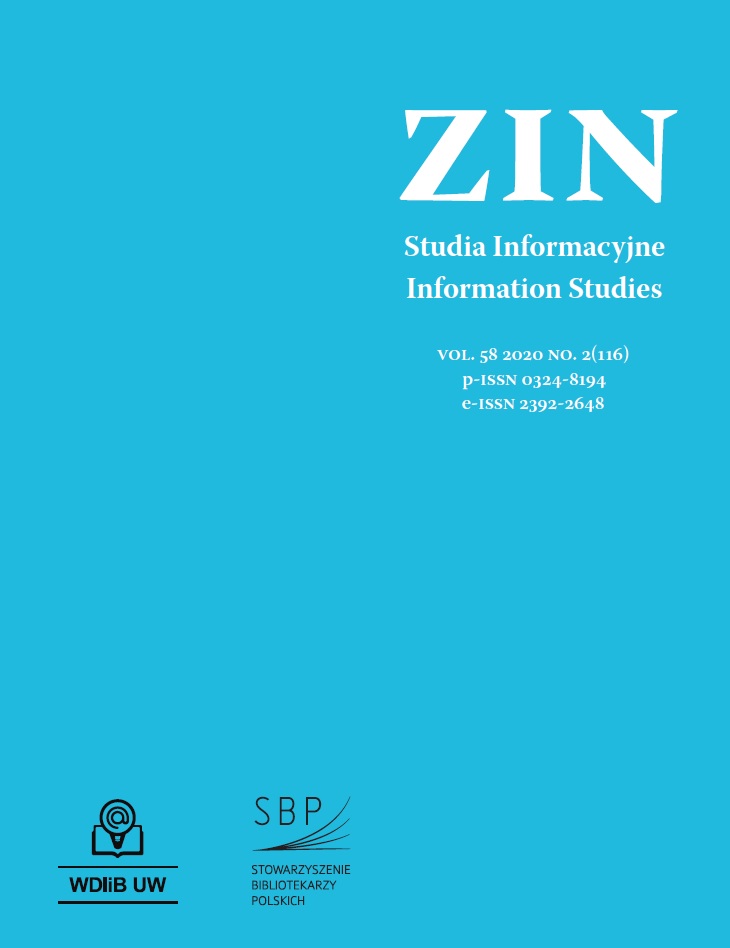Wybrane metody prognozowania tempa rozwoju dyscyplin naukowych (metoda regresji wielomianowej trzeciego stopnia, metoda autoregresji oraz wygładzania wykładniczego)
Selected Methods of Forecasting the Rate of Scientific Disciplines Development (Third Degree Polynomial Regression Method, Autoregression Method and Exponential Smoothing)
Author(s): Łukasz Opaliński, Marcin JarominSubject(s): Library and Information Science
Published by: Wydawnictwa Uniwersytetu Warszawskiego
Keywords: Bibliometrics; Development of science; Forecasting methods; Scientific domains and areas; Scientometrics; Statistics in information science; Scientific communication
Summary/Abstract: Purpose/Thesis: The article compares several statistical methods, which can be used to forecast the rate of the evolution of scientific disciplines. The data sample comprised the citations of specific scientific publications. The article emphasized the possibility of generalization of the results yielded by the analysis of this random sample. It also highlighted the limitations of each forecasting method, and proposed rough solutions to these problems. Approach/Methods: The authors used a data set comprising almost 25 thousands of citations. They applied several distinct statistical methods inspired by econometric models. These were polynomial regression method, regression method with a correction for the autocorrelation in the residual components, an autoregression method, an autoregression method with the correction for non-stationarity of modelled process and Holt’s adaptive model of exponential smoothing. The regression methods were tested for the fulfillment of the Gauss-Markov conditions. Moreover, common accuracy measures, as well as the prognosis errors coefficients were calculated and compared for all the methods applied. Results and conclusions: The analysis showed that the most precise method was the polynomial regression method with a correction for the autocorrelation in residual components. The reliability of the autoregression method is comparable with that of the regression methods. The adaptive exponential smoothing method yielded ambiguous results. This suggests directions for further research. Research limitations: The basic limitation of this study was the range of empirical data available to the authors, which was restricted to a single scientific discipline, and, further, limited to Polish-language texts published in journals (periodicals). Originality/Value: The originality of the study lies in the innovative juxtaposition of the well-known quantitative methods, which have not been used to predict the rate of the development of scientific disciplines before. Secondly, the study shows their potential in this field of inquiry, and makes clear the need for further improvement. The study identifies the most promising methodology, which may open the way for the better understanding of science’s internal dynamics.
Journal: Zagadnienia Informacji Naukowej – Studia Informacyjne
- Issue Year: 58/2020
- Issue No: 2 (116)
- Page Range: 7-25
- Page Count: 19
- Language: Polish

